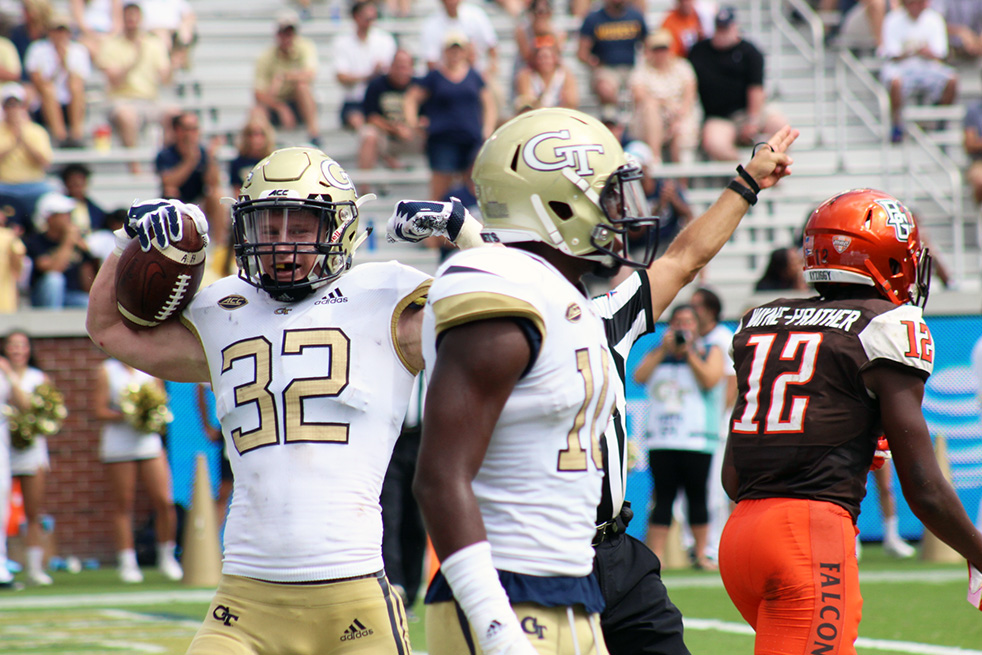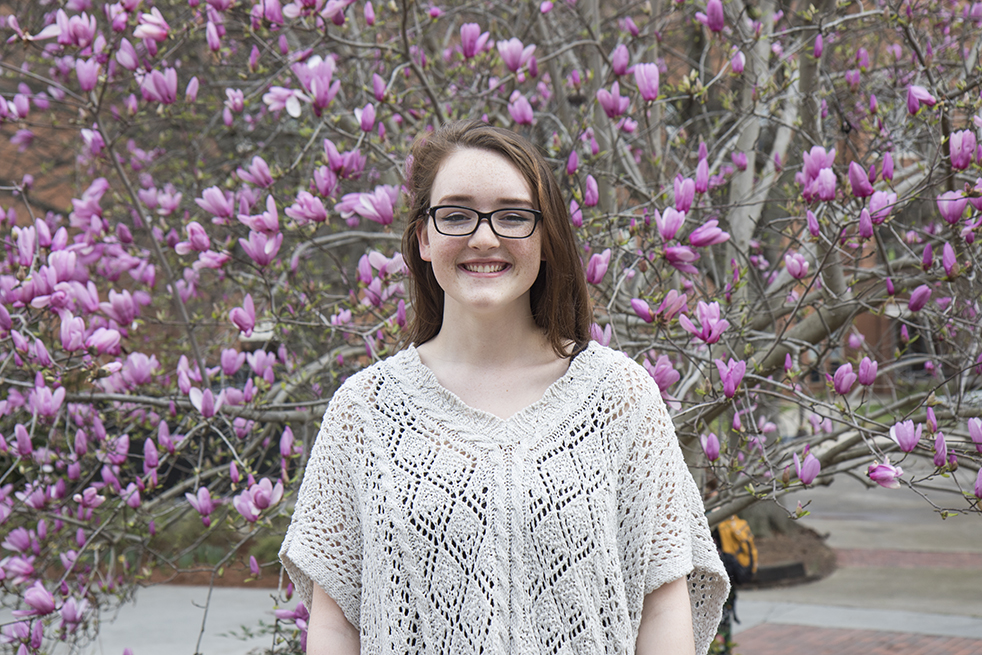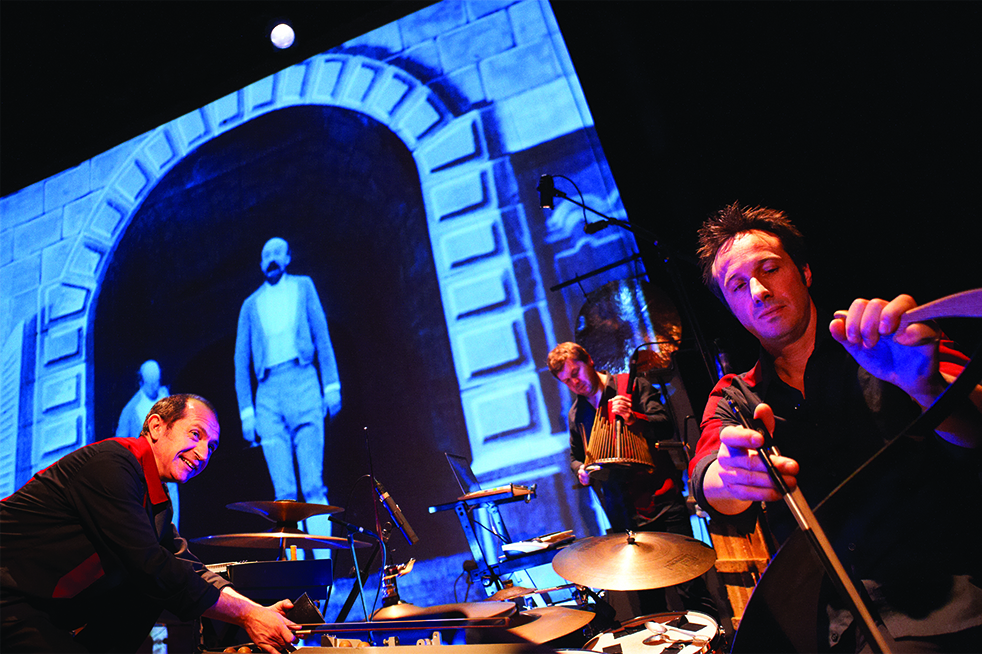
Do not count Tech out of the ACC Coastal division quite yet. The Jackets’ win over Virginia Tech on Oct. 25 helped keep alive their chances of reaching the ACC Championship Game.
Under the guidance of redshirt freshman QB Tobias Oliver, Tech thoroughly thrashed the Hokies to the tune of 465 yards, all rushing — the Jackets did not complete a pass in the game, their first time ever in the Paul Johnson era, and nonetheless put up 49 points. Tech’s seven rushing touchdowns against Virginia Tech were the most that the Hokies had allowed since Alabama hung nine rushing touchdowns on them in 1973.
But last Thursday’s victory had more of an impact for the Jackets than simply filling up a stat sheet and demolishing their Techmo Bowl rivals — which feels less and less like a rivalry, as Tech has walked away with three straight in Blacksburg and four of five overall. Tech’s victory helped keep alive their hopes at the ACC Coastal divisional crown.
Tech entered last Thursday’s game just 1-3 in the ACC, with the lone win against winless-in-conference Louisville, tied for last in the ACC Coastal with UNC. But Tech’s victory over the Hokies accomplished three things. First, it knocked Virginia Tech off from atop of the ACC Coastal where they had resided with a 3-0 record. Second, after a chaotic week within the Coastal division, Tech climbed out of the basement — Tech went from tied for last to fifth, just a sneeze away from Miami. Third, it ensured that the Jackets would hold the tiebreaker over Virginia Tech, a crucial outcome if Tech stands any chance of making the ACC Championship game in Charlotte.
Currently, No. 23 Virginia leads the ACC Coastal with a 4-1 record, followed by Virginia Tech at 3-1, Miami at 2-2, and finally Tech at 2-3. As a scheduling quirk, three of the teams in Tech’s last four ACC games are ahead of them in the standings, presenting Tech with the unique situation of being able to claw their way up the standings down the stretch despite a poor opening to ACC play. Tech’s path to the postseason began with a win over Virginia Tech — if they can keep pace and win out, the Jackets will finish with a record of 5-3 while handing further losses to Virginia and Miami.
If Tech runs the table, then if Virginia Tech loses to No. 24 Boston College and Miami but beats Pitt and Virginia, Virginia Tech would also finish 5-3 as well. The best record that Virginia could finish with would be 5-3 too, and Miami and Pitt would finish at best 4-4 and 5-3, respectively. Despite having lost to Pitt earlier this season, the Jackets would win a four-way or three-way tie by virtue of having beat Virginia Tech and, in this hypothetical, Virginia. Virginia Tech would also have a 2-1 record against the tied teams, but a loss to Tech. Tech would still lose a two-way tie with Pitt, but the Jackets have more control of their own destiny than their record might indicate. Given that Miami has faltered down the stretch and given that Virginia looks over-ranked based on their strength of schedule, it is not entirely unrealistic that the Jackets might be playing for a spot in the conference title game.
Tech’s path to 5-3 might not even be that treacherous — according to the ESPN Football Power Index, Tech has a 76 percent chance of winning their game against UNC, a 45 percent chance of winning against Miami, and a 69 percent chance of beating of UVA, giving them a 24 percent chance of winning out in the Coastal, assuming that these are independent events. At the very least, Tech’s odds of making a bowl game appear much better than they did earlier this season when Tech was 1-3 — by FPI, Tech has a highly reasonable 73 percent chance of winning at least two games of their remaining slate against North Carolina, Virginia, Miami, and Georgia.
Tech’s path to an ACC Coastal bid is all the more complicated by the fact that Miami, Virginia, Pitt, and Virginia Tech have some slate of games against each other coming up as well. Still, this may yet play into Tech’s favor — if any team is unable to separate themselves from the pack in the notoriously chaotic Coastal division, Tech has the advantage in terms of tiebreakers and may yet find themselves facing off against the Atlantic division winners — most likely the Clemson Tigers, who are still undefeated both within the conference and overall. Tech was thoroughly steamrolled by the Tigers on Sept. 22 of this year, 49-21, but Tech still pegged the third-most points on Clemson of all of their opponents this year, behind only Texas A&M and Syracuse.
Still, it is an uphill climb, and Tech cannot afford to make any mistakes. Tech’s rocky road to December continues this Saturday as Tech travels to Chapel Hill to take on UNC. Tech is 29-20-3 all-time against UNC and the Jackets have won nine of their last twelve against the Tar Heels.









